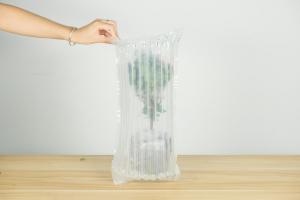How much chemicals are left in treatment plant water?
Water treatment plants play a vital role in ensuring clean and safe drinking water for communities. However, the process of treating water involves the use of various chemicals that can have harmful effects if left in the water. Many people are concerned about how much of these chemicals are left in the treated water that eventually goes into their homes. This article will explore the different types of chemicals used in water treatment and how much of them may remain in the water.
Chlorine
Chlorine is one of the most commonly used chemicals in water treatment. Its main function is to disinfect the water by killing harmful microorganisms. The amount of chlorine added to the water depends on the level of contamination, but the most common range is between 0.2-0.5 mg/L. This amount is enough to kill most bacteria and viruses, but it is important to note that some chlorine may remain in the water after treatment. According to the World Health Organization, the maximum acceptable level of residual chlorine in drinking water is 5 mg/L. Most water treatment plants aim to keep residual chlorine levels between 1-2 mg/L, which is deemed safe for human consumption.
Fluoride
Fluoride is another common chemical used in water treatment. Its primary function is to prevent tooth decay by strengthening tooth enamel. The optimal level of fluoride in drinking water is 0.7 mg/L, with a maximum allowable limit of 4 mg/L. While fluoride is considered safe at these levels, some people may be sensitive to it and experience side effects such as dental fluorosis or skeletal fluorosis. Water treatment plants must monitor and regulate fluoride levels to ensure they do not exceed the maximum acceptable limit.
Chloramine
Chloramine is a disinfectant made by the combination of chlorine and ammonia. It is sometimes used in place of free chlorine because it is more stable in water. The residual level of chloramine is typically between 1-3 mg/L, but it can vary depending on the water source and treatment process. While chloramine is considered safe for human consumption, it can have negative effects on fish and other aquatic life. Therefore, it is important for water treatment plants to monitor the levels of chloramine in the water and ensure they do not reach toxic levels.
Heavy metals
Heavy metals such as lead, arsenic, and mercury can be found in natural water sources and can be harmful to human health. Water treatment plants use various methods to remove these heavy metals from the water, such as coagulation, filtration, and ion exchange. The residual levels of heavy metals in treated water are typically very low, often below the detectable limit. However, accidental releases or equipment failures can cause an increase in heavy metal levels in the water. Water treatment plants must have contingency plans in place to quickly respond to these situations and protect the public from harm.
Conclusion
In conclusion, water treatment plants use a variety of chemicals to ensure clean and safe drinking water. While residual levels of these chemicals in treated water are typically within safe limits, it is important for water treatment plants to monitor and regulate these levels to ensure they do not pose a risk to human health or the environment.

 how many times do yo...
how many times do yo... how many planted tre...
how many planted tre... how many pine trees ...
how many pine trees ... how many pecan trees...
how many pecan trees... how many plants comp...
how many plants comp... how many plants can ...
how many plants can ... how many plants and ...
how many plants and ... how many pepper plan...
how many pepper plan...































